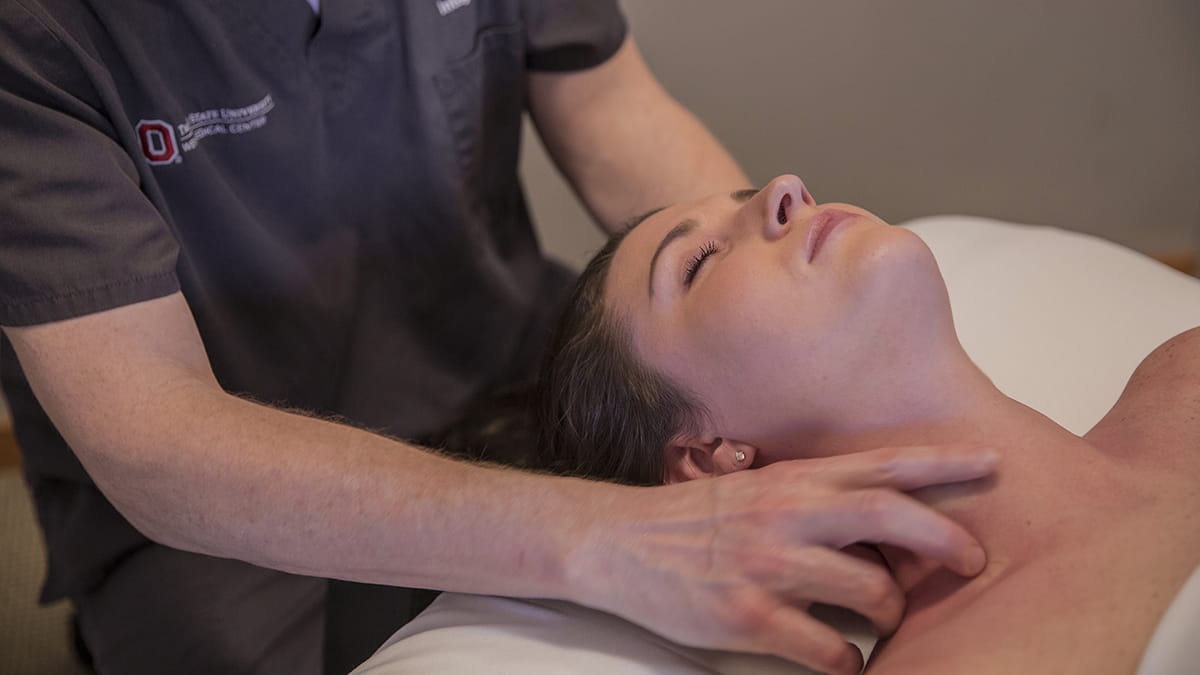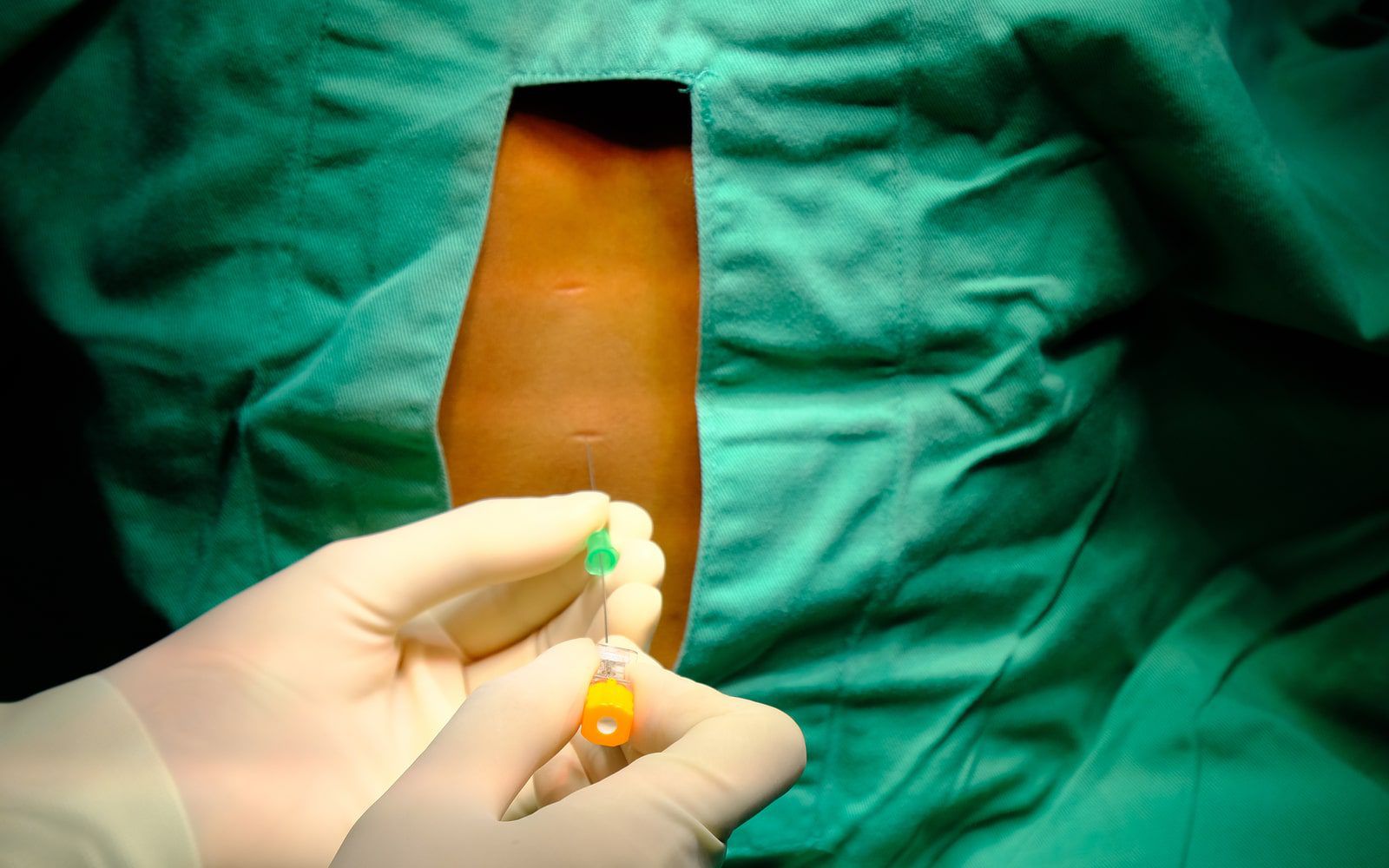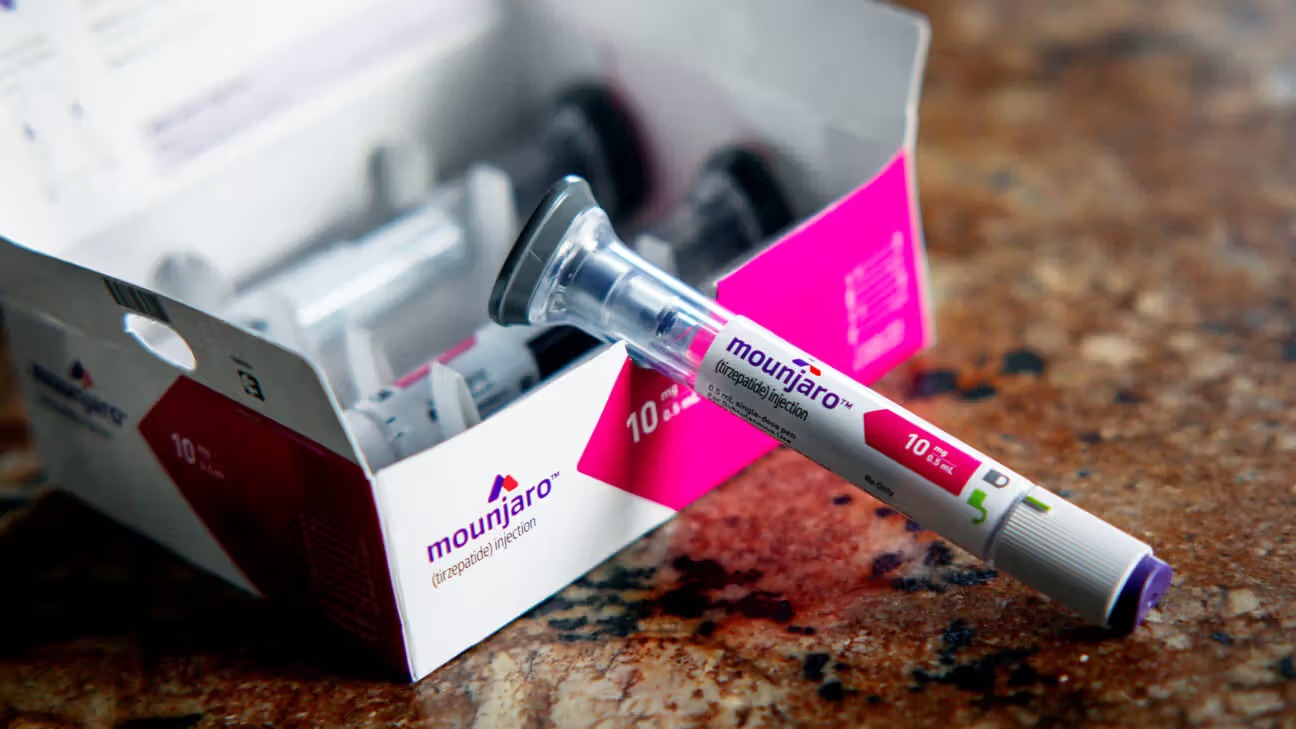

Finance
What Insurance Companies Cover Prp Injections
Published: November 18, 2023
Finance insurance options for PRP injections. Find out which insurance companies cover PRP injections and how to navigate the process.
(Many of the links in this article redirect to a specific reviewed product. Your purchase of these products through affiliate links helps to generate commission for LiveWell, at no extra cost. Learn more)
Table of Contents
- Introduction
- What are PRP Injections?
- How do PRP Injections Work?
- Benefits of PRP Injections
- Insurance Coverage for PRP Injections
- Factors that Affect Insurance Coverage for PRP Injections
- Common Insurance Plans that Cover PRP Injections
- Steps to Check Insurance Coverage for PRP Injections
- Tips for Getting Insurance Coverage for PRP Injections
- Conclusion
Introduction
When it comes to medical procedures, insurance coverage plays a vital role in easing the financial burden on patients. One such procedure that has gained popularity in recent years is PRP (Platelet-Rich Plasma) injections. These injections have shown promising results in various fields of medicine, including orthopedics, dermatology, and sports medicine. However, it is essential to understand the insurance coverage options available for PRP injections to ensure that patients can benefit from this innovative treatment without breaking the bank.
PRP injections involve extracting a small amount of a patient’s blood and spinning it in a centrifuge to separate the platelet-rich plasma. This concentrated plasma is then injected back into the patient’s body at the site of injury or a specific treatment area. The high concentration of platelets in PRP injections provides a rich source of growth factors, which can aid in tissue repair, reduce inflammation, and promote healing.
The potential benefits of PRP injections are vast. They are commonly used to treat chronic pain conditions, such as tendinitis, osteoarthritis, and even hair loss. These injections have gained popularity due to their minimally invasive nature, shorter recovery time compared to surgery, and the potential to eliminate the need for long-term medication.
However, coverage for PRP injections can vary depending on the insurance plan and the specific medical condition being treated. While some insurance companies offer coverage for PRP injections, others may consider it an experimental or cosmetic procedure, leading to limited or no coverage.
Several factors influence insurance coverage for PRP injections. The type of insurance plan, such as private health insurance, Medicare, or Medicaid, can impact coverage options. The medical necessity of the procedure, the specific insurance company’s policies, and the physician’s recommendation also play crucial roles in determining coverage.
It is important for patients to be aware of their insurance coverage options and take necessary steps to determine whether PRP injections are covered under their plan. This article will delve into the various aspects of insurance coverage for PRP injections, providing insights, tips, and guidelines to help individuals navigate the complexities of insurance policies and maximize their chances of receiving coverage for this innovative treatment.
What are PRP Injections?
Platelet-Rich Plasma (PRP) injections are a regenerative medical treatment that uses the patient’s own blood to promote healing and recovery. The procedure involves extracting a small amount of blood from the patient and spinning it in a centrifuge to separate the platelet-rich plasma from the other components of the blood.
Platelets are primarily known for their role in blood clotting. However, they also contain a high concentration of growth factors and other bioactive proteins that are essential for tissue repair and regeneration. By isolating the platelet-rich plasma, the concentration of growth factors is significantly increased, allowing for enhanced healing potential.
PRP injections can be used in various medical fields, including orthopedics, sports medicine, and dermatology. In orthopedics, PRP injections are commonly used to treat conditions such as tendonitis, ligament injuries, and osteoarthritis. Sports medicine professionals often use PRP injections to help athletes recover from injuries and enhance their performance. In dermatology, PRP injections can be effective in hair restoration and rejuvenating the skin.
The procedure for PRP injections is relatively simple and minimally invasive. After the blood is extracted, it is placed in a centrifuge, where it undergoes a rapid spinning process. This separates the blood into different layers, with the platelet-rich plasma settling in the middle layer. The extracted PRP is then carefully injected into the target area using a fine needle, guided by imaging techniques for accuracy.
PRP injections work by introducing a concentrated dose of growth factors and bioactive proteins directly into the site of injury or treatment. These growth factors stimulate the body’s natural healing response, attracting stem cells and promoting the production of new cells and tissues. This, in turn, aids in reducing inflammation, accelerating healing, and improving overall tissue regeneration.
It’s important to note that PRP injections are not a miracle cure or a one-size-fits-all solution. The effectiveness of PRP injections can vary depending on the individual, the specific condition being treated, and other factors. Consulting with a qualified healthcare professional is crucial to determine whether PRP injections are the right course of treatment for a particular condition.
Overall, PRP injections offer an innovative and promising approach to promote healing and recovery in various medical fields. With their minimal invasiveness and potential for reducing the need for more invasive procedures or long-term medication, PRP injections have gained popularity among both patients and medical professionals.
How do PRP Injections Work?
PRP injections harness the healing power of the patient’s own blood to promote tissue repair and regeneration. The process involves extracting a small amount of blood from the patient and separating the platelet-rich plasma (PRP) from the other components through a centrifugation process.
Once the PRP is obtained, it is carefully injected back into the patient’s body at the site of injury or treatment area. The concentration of growth factors and other bioactive proteins in the PRP promotes the body’s natural healing response and accelerates the repair process.
When PRP is injected into the target area, it releases various growth factors, such as platelet-derived growth factor (PDGF), transforming growth factor-beta (TGF-β), and vascular endothelial growth factors (VEGF). These growth factors play crucial roles in blood vessel formation, collagen synthesis, and cell migration, which are essential for tissue repair and regeneration.
The growth factors released by the PRP injections attract stem cells to the area of treatment. Stem cells have the potential to differentiate into various cell types and contribute to tissue regeneration. They can stimulate the production of new cells and tissues, including blood vessels, cartilage, and collagen, leading to improved healing and recovery.
PRP injections also have anti-inflammatory properties. The growth factors and bioactive proteins in PRP help to reduce local inflammation at the site of injury. By reducing inflammation, PRP injections promote a healthier environment for tissue repair and support the body’s natural healing processes.
The procedure for PRP injections is typically performed in a medical office or clinic and can take about 30 minutes to an hour to complete. The healthcare professional will use sterile techniques to extract the blood and prepare the PRP. Image-guidance techniques, such as ultrasound or fluoroscopy, may be used to ensure accurate placement of the PRP into the target area.
It’s important to note that the effectiveness of PRP injections can vary depending on several factors, including the specific condition being treated, the patient’s overall health, and their individual response to the treatment. PRP injections are often used in conjunction with other therapeutic modalities, such as physical therapy or medications, to optimize the results.
Overall, PRP injections provide a non-surgical and minimally invasive approach to promote healing and tissue regeneration. By harnessing the body’s natural healing potential, PRP injections offer a promising treatment option for a variety of conditions, ranging from musculoskeletal injuries to skin rejuvenation.
Benefits of PRP Injections
PRP (Platelet-Rich Plasma) injections offer several potential benefits for patients seeking regenerative and healing treatments. These injections have gained popularity in various medical fields due to their effectiveness, minimal invasiveness, and versatility. Here are some of the key benefits of PRP injections:
- Promotes tissue repair and regeneration: PRP injections provide a concentrated dose of growth factors, bioactive proteins, and other essential substances that stimulate the body’s natural healing response. This promotes tissue repair, accelerates wound healing, and aids in regeneration of damaged tissues.
- Enhances collagen production: Collagen plays a crucial role in maintaining the strength and elasticity of tissues. PRP injections can stimulate the production of collagen, which can contribute to healthier, stronger, and more resilient tissues.
- Reduces inflammation: The growth factors in PRP injections have anti-inflammatory properties, helping to reduce swelling and inflammation at the site of injury or treatment. This can provide relief from pain and discomfort associated with inflammatory conditions.
- Minimizes the need for more invasive procedures: By harnessing the body’s natural healing capabilities, PRP injections can often reduce the need for more invasive surgical procedures. This can result in shorter recovery times, less post-operative pain, and lower risk of complications.
- Customizable treatment: PRP injections can be tailored to meet the specific needs of each patient. The concentration of platelets and growth factors can be adjusted based on the condition being treated and the patient’s response to the treatment.
- Wide range of applications: PRP injections have shown promise in various medical fields, including orthopedics, dermatology, and sports medicine. They can be used to treat conditions such as osteoarthritis, tendinitis, chronic wounds, hair loss, and more.
- Minimal side effects: Since PRP injections use the patient’s own blood, there is minimal risk of an allergic or adverse reaction. The procedure is generally safe and well-tolerated, with few reported side effects.
- Shorter recovery time: Compared to invasive surgeries, PRP injections typically have a shorter recovery period. This allows patients to return to their daily activities more quickly, reducing the disruption to their lives.
- Potential for long-lasting results: PRP injections aim to stimulate the body’s natural healing mechanisms. This can result in long-term benefits, including improved tissue strength, reduced pain, and enhanced functionality.
It’s important to note that the effectiveness of PRP injections can vary depending on the individual, the specific condition being treated, and other factors. Consulting with a qualified healthcare professional is crucial to determine if PRP injections are a suitable treatment option for a particular condition.
Overall, PRP injections offer an exciting and promising approach to promote healing, tissue repair, and regeneration. With their numerous benefits and versatility, PRP injections have become a popular choice for both patients and medical professionals seeking innovative regenerative treatments.
Insurance Coverage for PRP Injections
Insurance coverage for PRP (Platelet-Rich Plasma) injections can vary depending on several factors, including the type of insurance plan, the specific medical condition being treated, and the insurance company’s policies. While some insurance plans cover PRP injections, others may consider them experimental or cosmetic procedures, leading to limited or no coverage.
In many cases, insurance coverage for PRP injections is determined by the medical necessity of the procedure. Insurance companies typically require supporting documentation from the healthcare provider, such as medical records, diagnostic tests, and a detailed treatment plan, to assess the need for PRP injections. The insurance company evaluates whether the procedure is considered medically necessary and meets specific criteria before approving coverage.
It’s important to note that insurance coverage policies can change over time, and different insurance companies may have varying guidelines for coverage. Some insurance plans may have specific exclusions for PRP injections or limit coverage to certain medical conditions.
Additionally, certain insurance plans may require pre-authorization or a referral from a primary care physician or specialist before approving coverage for PRP injections. Patients should contact their insurance provider directly to understand their policy’s coverage criteria and requirements.
It is worth mentioning that even if insurance plans cover PRP injections, there may still be out-of-pocket expenses for patients. This may include deductibles, co-pays, or co-insurance. Understanding the specifics of one’s insurance coverage and potential financial responsibilities is crucial for planning and budgeting for PRP injections.
To determine if PRP injections are covered under a particular insurance plan, patients can take the following steps:
- Contact the insurance provider: Patients should reach out to their insurance company directly to inquire about coverage for PRP injections. They can call the customer service number listed on their insurance card or visit the insurance company’s website for more information.
- Provide necessary documentation: Healthcare providers can support the insurance coverage process by providing documented evidence of medical necessity. This may include medical records, diagnostic test results, and a detailed treatment plan. The healthcare provider can submit this documentation to the insurance company on behalf of the patient.
- Consult with the healthcare provider: Patients should discuss their treatment options with their healthcare provider to determine if PRP injections are both medically appropriate and likely to be covered by insurance. The healthcare provider can guide patients through the insurance coverage process and provide any necessary documentation or referrals.
- Review the insurance policy: Patients should carefully review their insurance policy to understand the coverage limitations, exclusions, and any requirements for pre-authorization or referrals.
- Consider alternative payment options: If insurance coverage for PRP injections is not available or limited, patients may explore alternative payment options, such as private financing, health savings accounts (HSAs), or flexible spending accounts (FSAs).
It’s important to be proactive and thorough in exploring insurance coverage options for PRP injections. Patients should be prepared to advocate for themselves and work closely with their healthcare provider and insurance company to maximize their chances of receiving coverage for this innovative treatment.
Factors that Affect Insurance Coverage for PRP Injections
Several factors can influence insurance coverage for PRP (Platelet-Rich Plasma) injections. Understanding these factors can help individuals navigate the complexities of insurance policies and determine their eligibility for coverage. Here are some key factors that can affect insurance coverage for PRP injections:
- Insurance Plan Type: The type of insurance plan a patient has can impact coverage for PRP injections. Private health insurance plans may vary in their coverage criteria, while government-funded plans like Medicare or Medicaid have their own guidelines for coverage. Patients should familiarize themselves with the coverage details specific to their insurance plan.
- Medical Necessity: Insurance companies typically consider the medical necessity of a procedure when evaluating coverage. PRP injections may be more likely to receive insurance coverage when they are deemed medically necessary for treating a specific condition and when other conservative treatment options have been exhausted.
- Insurance Company Policy: Each insurance company has its own policies regarding the coverage of PRP injections. Some insurance companies may include PRP injections as covered treatments for certain medical conditions, while others may consider them experimental or cosmetic procedures with limited or no coverage.
- Specific Medical Condition: The medical condition being treated with PRP injections can also influence insurance coverage. While some conditions may have established evidence supporting the effectiveness of PRP injections, others may be considered less established or have limited research to support their use.
- Physician Recommendation: The recommendation of the healthcare provider who suggests PRP injections can impact the insurance coverage decision. Insurance companies often require supporting documentation, such as medical records and a detailed treatment plan, from the healthcare provider to evaluate the necessity of PRP injections.
- Prior Authorization Requirements: Some insurance plans may require prior authorization or pre-approval before covering PRP injections. This means that patients need to obtain approval from the insurance company before undergoing the procedure to ensure coverage.
- Network Provider Availability: Insurance coverage may depend on whether the healthcare provider administering the PRP injections is within the insurance company’s network. Out-of-network providers may result in limited coverage or higher out-of-pocket costs for patients.
It is important for patients to communicate with their healthcare providers and insurance company to understand the specific coverage criteria for PRP injections. Patients should also be prepared to provide any necessary documentation, such as medical records or diagnostic test results, to support the coverage evaluation process.
Patients should keep in mind that insurance coverage policies can change over time, so it is essential to stay updated on any policy modifications that may affect coverage for PRP injections. Consulting with a healthcare provider and closely reviewing the insurance policy can provide individuals with the necessary information to make informed decisions regarding their treatment options.
Common Insurance Plans that Cover PRP Injections
While insurance coverage for PRP (Platelet-Rich Plasma) injections can vary depending on the specific insurance plan and company, there are some common insurance plans that may provide coverage for this regenerative treatment. It’s important to note that coverage policies can differ, so it is essential for patients to check with their individual insurance provider to determine their specific coverage criteria. Here are some common insurance plans that may cover PRP injections:
- Private Health Insurance: Many private health insurance plans offer coverage for PRP injections. The extent of coverage may depend on the plan’s coverage criteria and the specific medical condition being treated. Patients with private health insurance should review their policy to understand the coverage limitations, requirements for pre-authorization or referrals, and any out-of-pocket expenses they may be responsible for.
- Medicare: Medicare is a federal health insurance program primarily for individuals aged 65 and older. In certain cases, Medicare may provide coverage for PRP injections, particularly when considered medically necessary and within the program’s coverage criteria. Patients should consult with their healthcare provider and Medicare directly to determine if their specific condition meets the coverage requirements.
- Medicaid: Medicaid is a joint federal and state health insurance program that provides coverage for individuals with low income. Medicaid coverage for PRP injections can vary depending on the state’s specific policies, guidelines, and the medical necessity of the procedure. Patients should contact their state Medicaid office or healthcare provider to explore coverage options.
- Workers’ Compensation: Workers’ compensation insurance provides coverage for employees who suffer work-related injuries or illnesses. In some cases, PRP injections may be covered under workers’ compensation insurance if the treatment is deemed medically necessary for an occupational injury. Patients should consult with their employer and the workers’ compensation insurance provider to understand the coverage criteria and obtain necessary approvals.
- Personal Injury Protection (PIP): Personal Injury Protection (PIP) coverage is typically part of auto insurance policies in no-fault or medical expense states. PIP coverage may include medical treatments, such as PRP injections, for injuries resulting from a car accident. Patients should review their auto insurance policy to determine if PIP coverage applies and what specific medical treatments are eligible.
It is important to emphasize that the inclusion of PRP injections as a covered treatment may vary within each insurance plan. Patients should contact their insurance provider to understand the specific coverage criteria, any requirements for pre-approval or documentation, and any potential out-of-pocket costs associated with PRP injections.
Patients should also consult with their healthcare provider, who can provide guidance on navigating insurance coverage issues and help facilitate communication between the patient, insurance company, and any necessary referrals.
Lastly, it’s worth noting that insurance coverage policies can change over time, and different insurance companies may have different guidelines. Staying informed and regularly communicating with the insurance provider will ensure individuals are aware of any changes that may affect their coverage for PRP injections.
Steps to Check Insurance Coverage for PRP Injections
Determining insurance coverage for PRP (Platelet-Rich Plasma) injections can help individuals plan and prepare for the cost of this regenerative treatment. While insurance coverage policies can vary, there are steps patients can take to check their coverage and understand their financial responsibilities. Here are the steps to check insurance coverage for PRP injections:
- Contact the Insurance Provider: Start by reaching out to the insurance company directly to inquire about coverage for PRP injections. The customer service number can usually be found on the insurance card or on the company’s website. Prepare the insurance policy details and be ready to provide the specific CPT (Current Procedural Terminology) code, which is 0232T for PRP injections.
- Ask about Coverage Criteria: Inquire about the specific coverage criteria for PRP injections. Find out if they require pre-authorization, referral from a healthcare provider, or documentation of medical necessity. Request a copy of the coverage policy or guidelines related to PRP injections for reference.
- Consult with Healthcare Provider: Discuss PRP injections with your healthcare provider and determine if the procedure is medically necessary and appropriate for your condition. They can provide supporting documentation, such as medical records, test results, and a treatment plan, to submit to the insurance company.
- Review the Insurance Policy: Carefully review the insurance policy documents, including the plan’s summary of benefits, exclusions, and limitations. Pay attention to any specific language or criteria related to coverage for PRP injections.
- Submit Necessary Documentation: Work with your healthcare provider to ensure they submit all required documentation, including medical records and a detailed treatment plan, to support the medical necessity of PRP injections. Promptly provide any requested information or forms to the insurance company.
- Follow Up with the Insurance Company: Keep track of the communication with the insurance company and follow up regularly to check the status of your coverage request. Document all conversations, including the date, time, and the name of the representative you spoke with.
- Document Financial Responsibilities: While awaiting a decision from the insurance company, familiarize yourself with your financial responsibilities. Understand the deductibles, co-pays, co-insurance, and any out-of-pocket expenses that may apply to PRP injections.
- Explore Other Payment Options: If coverage for PRP injections is denied or you have a high financial responsibility, consider alternative payment options. This may include private financing, health savings accounts (HSAs), or flexible spending accounts (FSAs).
Remember that each insurance plan and company may have different requirements and processes for coverage determination. It’s essential to be proactive, ask questions, and stay organized throughout the process.
Working closely with your healthcare provider and maintaining open communication with the insurance company will help you navigate the necessary steps and maximize your chances of receiving insurance coverage for PRP injections.
Tips for Getting Insurance Coverage for PRP Injections
Securing insurance coverage for PRP (Platelet-Rich Plasma) injections can be a complex process. However, there are several tips and strategies that can increase your chances of getting insurance coverage for this regenerative treatment. Here are some helpful tips:
- Understand your insurance policy: Familiarize yourself with your insurance policy and understand the coverage details, including any limitations, exclusions, and requirements for pre-authorization or referrals.
- Communicate with your healthcare provider: Work closely with your healthcare provider to ensure they understand your insurance coverage goals. They can provide necessary documentation, such as medical records and a detailed treatment plan, to support the medical necessity of PRP injections.
- Document your medical condition: Maintain a comprehensive record of your medical condition, including any prior treatment attempts, diagnostic test results, and the impact of the condition on your daily life. This documentation can strengthen your case for insurance coverage.
- Be proactive: Start the insurance coverage inquiry process early. Begin by contacting your insurance provider to gather information about coverage, required documentation, and processes.
- Keep detailed records: Document all communication with the insurance company, including the date, time, and the names of the representatives you speak with. This helps maintain a clear record of your efforts and aids in any potential appeals process if coverage is initially denied.
- Consider obtaining a pre-authorization: Inquire with your insurance provider about obtaining pre-authorization for PRP injections. This can help clarify coverage in advance and reduce the likelihood of unexpected denials.
- Be persistent: If your initial request for coverage is denied, don’t give up. Be persistent in following up with the insurance company, providing any additional information requested, and appealing the decision if necessary.
- Seek support from your healthcare provider: Your healthcare provider can be an invaluable asset in navigating the insurance coverage process. They can provide guidance, support, and any necessary documentation for appeals or reconsideration.
- Explore alternative payment options: If insurance coverage is not possible or limited, discuss alternative payment options with your healthcare provider. This may include private financing, health savings accounts (HSAs), or flexible spending accounts (FSAs).
- Stay informed: Continuously educate yourself on the latest insurance policies and guidelines related to PRP injections. Insurance coverage criteria may change over time, so staying informed will help you navigate the process with the most up-to-date information.
Remember, every insurance plan is different, and coverage for PRP injections can vary. Persistence, organization, and effective communication with your healthcare provider and insurance company are key to increasing your chances of getting insurance coverage for PRP injections.
Be sure to consult with your healthcare provider and insurance company directly to understand the specific requirements, coverage criteria, and any potential out-of-pocket expenses associated with PRP injections.
Conclusion
Insurance coverage plays a crucial role in making medical procedures, such as PRP (Platelet-Rich Plasma) injections, accessible and affordable for patients. Understanding insurance coverage options for PRP injections is essential for individuals seeking this innovative regenerative treatment. While coverage can vary depending on factors such as the insurance plan, medical condition, and insurance company policies, the steps mentioned earlier and the tips provided can help individuals navigate the complexities of insurance policies and maximize their chances of receiving coverage.
PRP injections have shown promising results in promoting healing, tissue repair, and regeneration. They have become increasingly popular in various medical fields, including orthopedics, dermatology, and sports medicine. The potential benefits, such as enhanced tissue regeneration, reduced inflammation, and shorter recovery time, make PRP injections an attractive treatment option.
Patients should proactively communicate with their healthcare providers and insurance companies, ensuring that the necessary documentation is provided to support the medical necessity of PRP injections. Understanding the specific coverage criteria, exploring alternative payment options when necessary, and staying informed about insurance policies are crucial steps in seeking insurance coverage for PRP injections.
It’s important to note that even without insurance coverage, PRP injections may still be a valuable investment in one’s health and well-being. Consulting with a healthcare provider can help individuals make informed decisions about their treatment options and explore potential financing solutions.
In conclusion, while navigating insurance coverage for PRP injections may require effort and persistence, understanding the process and advocating for oneself can greatly increase the likelihood of receiving insurance coverage for this innovative and beneficial treatment. With the potential for improved healing, reduced pain, and enhanced functional outcomes, PRP injections offer patients a promising regenerative solution for various medical conditions.














